Beyond the Veil: Q&A with Man o' Ghosts
Multimedia ghost story creator Thom Burgess explains the techniques behind his latest horror project 'Mister Howl', as well as lessons learned piloting a host of successful indie projects
Hey, Thom! I’ve been following your multimedia ghost stories for several years now and had to reach out for an interview. You’ve received plaudits from several members of horror royalty, including Andy Nyman, Reece Shearsmith and horror director Corin Hardy. But, for me, it was Junji Ito who summed up the distinct creepiness of your work when he said that you understand very well, “that the most frightening tales are those told in whispers.”
I’ve just read your latest book, Mister Howl, and it’s an absorbing, innovative, and above all creepy-as-hell urban horror story. It’s like Rear Window as told by M.R. James (with a dash of Fright Night) and does brilliant work evoking a sense of horror gradually oozing from its hiding place over the course of the story. It’s another example of the brilliant work you’ve been doing within the grassroots horror scene.
For those horror fans yet to discover your work, can tell us who you are and the kind of projects you’ve created so far?
Thanks, Alec. That’s very kind of you to say. I’ve been writing for as long as I can remember, but doing so professionally since around 2013. Horror is my real passion, in particular ghost stories and strange folklore. I started off writing in comics, but I’m really interested in using different mediums to tell stories. From online to film, video games, to augmented reality. It feels like we’re existing at an exciting point in history where all these mediums, which once might have seemed fantastical, are becoming a lot more accessible. I think that’s hugely exciting, and if it means being able to tell a story in a new and unique way then that’s something that should be embraced.
You wrote your first graphic novella Malevolents in 2015 (with artist Joe Becci). You followed that with The Eyrie (with artist Barney Bodoano), which won Rue Morgue’s ‘Graphic Novel of 2017’. Last year your Early Haunts became one of the most successful horror anthologies ever launched on Kickstarter.
You’ve built an amazing back catalogue of graphic novel ghost stories, in which you’re combining traditions from across the spectrum of supernatural fiction: literary ghost stories with oral folklore, bygone hauntology with very modern, very urban found-footage mysteries.
When you first decided to write comics, why did you decide to self-publish? Why not save yourself some work and go pitch a story to 2000 AD instead? Or go to comic conventions in the States and chase editors at Dark Horse or Image?
Malevolents had been something I’d been thinking on for a while, trying to conjure the disquieting mood of a classic ghost story in a comic form. I’d binged a whole host of supernatural horror and went through everything selectively, trying to collect together the most unsettling elements from childhood memories of retro TV programmes and film, and re-reading ‘true’ accounts. Including something which happened to a friend of mine, who ended up staying the night in an old haunted record shop in my hometown.
Back then, I wasn’t overly familiar with crowdfunding sources nor the indie comic scene and I’d not seen anything akin really to what I wanted to create with different publishers. I felt more comfortable paying for the work myself rather than asking other people to put their money on me. So I actually wrote most of Malevolents on a plane to Madrid, scrawled in a notebook. The story was there from the start, loosely based around my own fascination with 50 Berkeley Square, reputedly the most haunted house in London. There’s a larger overarching narrative which plays into my book Ghoster, but Malevolents really was the start to it all. Creating a ghost that would be beyond horrific, invading your personal space. With a nasty reveal that would stay with you.
I read so many horror comics which promise to do that, but I can count on one hand the books that have really unsettled me over the years. So many SHOUT, but just ultimately under-deliver. The scares are played too safely. They don’t understand when to hold back or how to deliver a ‘reveal’ scare on the next page. Too many tropes are incorporated. Bogging down the horror or the art just doesn’t conjure the eerie ‘surrealness’ that should stay with you from a good scare.
READ: The Four Techniques of a Truly Scary Horror Comic Getting under a reader’s skin is about more than just showering them with gore and showing off your favourite monsters. Learn the dark arts of creating a truly disturbing horror comic
Books like Spookhouse by Scott Hampton and Through the Woods by Emily Carroll combine a familiar feeling of being told a folk tale with twists and gloriously horrific artwork that takes you by surprise. Whilst the work of Junji Ito constantly has you on the back step, trying to grapple with what horror is coming on the next page. But you never get comfortable and ultimately the work feels… unsafe, which is why I love it.
Your comics are all tight, short novellas. Would I be right in saying this has enabled you to get more projects published more quickly? Were you not tempted to work on something longer?
Yes, to a point. After Malevolents I had the bones for The Eyrie and Hallows Fell pretty much ready to go. I’ve worked on larger scale projects for the aforementioned Ghoster, which ties in with Malevolents with a history dating back hundreds of years. But I’ve been held back from working on anything longer form due to other commitments.
It was only thanks to the success of Early Haunts and the subsequent pandemic, when I first started writing Mister Howl, that I realised there was a potential demand in something longer form and I had a chance to finally fulfil that around my day job.
What’s the most important lesson you’ve learned about self-publishing? What’s the one thing you wished you’d known going in?
I think I discounted crowdfunding straight away, looking at it as an ‘easy ride.’ I’ve seen a lot of first time writers use it as a means of launching their debut comics and books, which deterred me a little. I felt it’s important to prove your worth first. Whilst I’m happy I paid for Malevolents myself, on reflection I might have used a platform such as Kickstarter earlier in order to help gain traction for its follow-ups for a wider audience.
There’s also a lot of gatekeeping within the comic world, which put me off for a long time. It took a while for me to realise there was really nothing stopping me from just creating. I come from a design background, so I’m lucky in the fact I’m used to handling layouts and print. That really helped.
I think it’s important to remember that you can build your own fanbase and do your own thing without necessarily feeling obliged to ‘follow the crowd’ on social media. I would certainly start a mailing list earlier if I could. Setting that up really helped get the word out about my work and find an audience.
Nothing spoils the mood in a horror comic more quickly than showing too much. On the other hand, nothing frustrates readers more than showing or explaining too little. Other times you might have a very specific image in mind for a particular apparition or whatever Lynchian hallucination you need the artist to convey. The end result is almost always a compromise; sometimes perfect, sometimes not.
How prescriptive are you when conveying your ideas to an artist? Do you write full script with super-detailed descriptions? Or do you just give them an idea and let them do their thing?
Super-detailed, always. I usually have a board of photographic references and scrawled imagery, etc. to outline the character and settings. But equally I’m a keen advocate of the Jaws philosophy. Don’t show everything too early. Genuinely, what’s the point? If the scares are strong, the audience will wait and that final delivery will land a bigger punch. SO many trailers these days just show absolutely everything. It blows my mind. I think it’s always worth holding on if you can.
Can you introduce us about your latest project, Mister Howl?
Mister Howl is a found-footage book made up of old transcripts, photos and other archival elements set in New York during the late 1990s. It follows a young filmmaker, Jay, who’s confined to a wheelchair and subsequently his small apartment after a terrible accident. To help pass the time, Jay starts monitoring and filming the activities of the residents of the neighbouring apartment complex with his old camcorder.
In doing so, he catches glimpses of something he believes supernatural attacking another resident. The book follows Jay’s attempts in uncovering what’s lurking in the other block through the means of audio transcripts, old CRT television stills of Jay’s videos, letters and emails.
I started writing Howl back in 2020 as a hobby during lockdowns and it quickly grew in scope and length. I’ve long loved ergodic fiction such as Mary Shelley’s Frankenstein, or more recently Mark Z. Danielewski,’s House of Leaves and Doug Dorst and J.J. Abraham’s S. But I also wanted to blend together my love of grainy old ghost photos and that creepy VHS aesthetic from films such as Lake Mungo and Rec.
I also played around telling thirty found footage ghost stories in my Photoghasts book, which I Kickstarted last year. Following that book’s popularity, I thought it seemed an opportunity to tell something longer form and see if it was feasible to actually successfully tell a ghost story in that way. So far (I’m pleased to say), it seems to have been fairly well received – which is a relief!
Mister Howl is another found-footage piece, a book compiled from transcribed audio, VHS freeze-frames and photocopied notes.
Do you think that the evolution of technology – with its basis in science and rationality – will eventually eradicate ghost stories? Or will it go on providing yet more platforms from which ghosts can haunt us?
I think that’s a great question – and I think about that a lot. At this point in time, with the influx of new technology and the rise of AI slowly starting to impact our lives, I think there’s a sudden real possibility of a quantum computer in our lifetime unravelling a haunting and determining it’s purely string theory, e.g. another reality pressing against ours. Or maybe the quantum matter from someone who’s passed on, moving between realities.
True, there is a real romance to not knowing, but maybe one day that will be eradicated. To that extent, there is a possibility that maybe we won’t always have ghost stories in the traditional sense. But there’ll be new interpretations. As wild as it sounds, if it is truly ‘the dead’ pressing or ‘invading’ our own reality, then that can be unsettling enough. With new augmented/virtual reality headsets and holographic projection tech, there’ll be new ways for people to tell their stories. I’m already exploring that medium and it presents some fantastically immersive opportunities for storytelling. That’s the key element, as long as we have people to tell their stories we’ll always have horror – that’s not going anywhere.
Shorter stories can afford to be about little more than the effects they evoke, but Mister Howl runs to 188 pages and feels suitably rich in themes: urban isolation, domestic violence, lockdown (it reminded me a lot of Kyle Edward Ball’s movie Skinamarink). I love that its events are set in 1997, in that sort of liminal space when analogue technology is being superseded by the internet.
It all felt very organic, but how conscious are you of theme starting out? Did you set out to explore a specific theme and come up with a premise to dramatize that? Or did that creepy premise come to you first and you explored the themes it gave you?
First and foremost, it was a creepy premise, keeping it isolated, echoing being in lockdown. Then everything pretty much organically grew out from there. I wanted to make Jay likeable. He’s been up against the worst, but somehow he’s still got hope. Convinced somehow, like his films, it’ll turn out okay in the end.
In terms of time period, I wanted to set it in the late ‘90s due to the restrictive technology. I didn’t want any clear shots of Howl and I wanted to give everything a nice analogue fuzz. Something which took an extensive amount of time in post! But also the late ‘90s is a really interesting point in time.
The early ‘90s felt hopeful, exciting. Whilst the latter part of the decade people were getting edgy around the thought of the ‘millenium bug.’ Also, there were some spectacularly scandalous issues in the states surrounding the ‘HOPE VI program’ and landlords allegedly misappropriating funds for that. I was really intrigued in that aspect and wanted to explore it further, playing on the themes of isolation and fear.
You recently – some might say foolishly – unearthed the opening credits to Shadowbox, that infamous lost TV show from the seventies, which traumatised a generation of kids here in the UK. You also managed to get your hands on a copy of the black-market LP Coldhouse ‘creepy sound effects to spook the family’ and recorded its ‘tainted’ B side.
What I love about these projects is the sense of what author Gary Budden calls ‘re-weirding’, that you’re making the world a little stranger, a little more numinous by discovering these fragments of the uncanny within it.
How important is mystery to you and your stories? Do you like to explain as much as possible to your readers? Or do you prefer to leave certain things unexplained?
Hugely important. It’s very much dependent on the individual project, but I’m a firm believer in knowing your source material well enough that you can start to deviate and go ‘off-road.’ I tried to do that too with my game Pylons, in which players were offered an opportunity to ‘educate’ themselves about the importance of pylons. Attaching aesthetics from British hauntology, such as public information films of the ‘70s/’80s, so it feels familiar, but unfamiliar at the same time.
The writer M.R. James was the master of that. So many of his stories start off with unparalleled levels of academic detail to them, before the rug is pulled out from under you and you find the protagonist is being pursued by an undead treasure guardian or some wraith from the past. If you can convince the reader, just for a moment, that whatever this is on the page/screen might just be able to crawl out and touch you, then as far as I’m concerned, you’ve won.
How do you manage your time to create all these ambitious personal projects in between the demands of a day job?
It’s a struggle! I’d like to say it’s down to careful scheduling, but that’s not always the case. There’s a lot of planning and ensuring projects don’t overlap. But I’m also a big advocate of connecting with like-minded creators and I’ve been incredibly lucky to be able to do that online meeting and working with some phenomenal creatives.
We’re so lucky to live in an age where you can literally see someone’s work online and go ‘hey that’s amazing – do you want to work together?’ The key thing is all of these processes take time, so finding a project you feel passionate about to keep returning to and finding someone you get along with is paramount. I’m pleased to say there’s a lot of lovely people though in horror!
Do you believe in ghosts?
Without a shadow of a doubt, there’s something to it. I also think a lot of stories can be put down to effects like ‘ultrasound’ – but it’s the unexplainable stuff that always intrigues me. A glitch in reality. The personal stories.
To me I’ve always been fascinated. It’s like you grow up being told the grass is green and the sky is blue, but there’s also a house down the end of your street where a dead person walks through the wall every night – and you go ‘WHAT? Why isn’t the world working night and day to work out what’s going on?’
I’ve had a couple of weird experiences, but I’m sure on a baseline level it’s just something we don’t fully understand yet. Our simple human perception can’t even perceive a range of visible lights or hear high frequencies. True colours aren’t even what we truly perceive them to be!
I think the problem with ghosts and the supernatural and the lack of scientific interest is mostly down to the fact that the language used for ghosts is too fantastical. There’s millennia of folktales and ghost stories wrapped around it. I’m certain that quantum computing and AI would one day resolve it. It’s already moving at lightning speeds. But whether we reach that point when it feels like the world is literally falling apart might just not be something achievable in any of our lifetimes.
Where can our readers find you and your work?
I’m on social networks as manoghosts, but people can also find my work over on youtube as manoghoststv and my website to buy my work www.manoghosts.com
You can also find out more about Manoghost’s projects via his Linktree, as well as Thom’s latest Kickstarter, Scrylight: An Augmented Reality Ghost Hunt Horror Experience by Spectropia Studios.
Thank you so much for your time, Thom.
Stay weird.





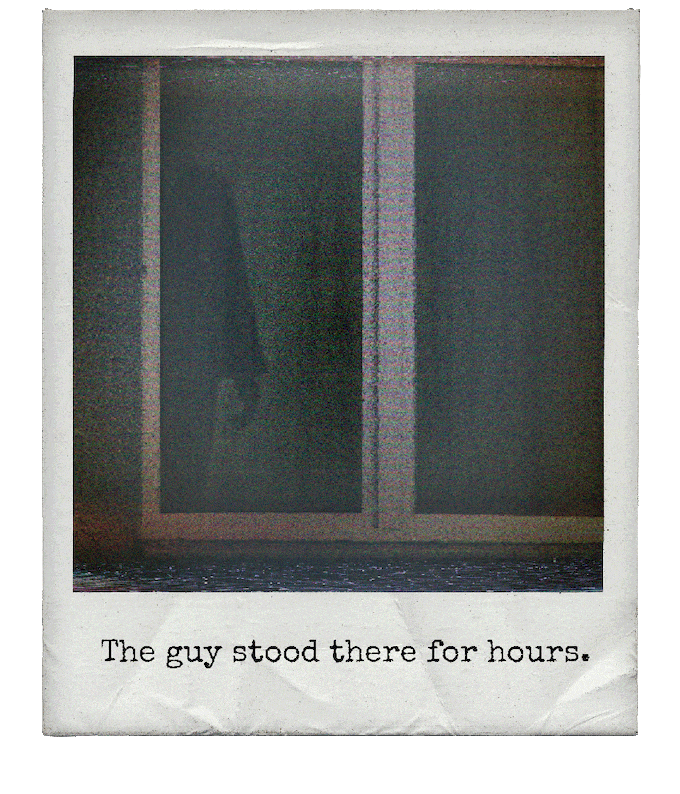
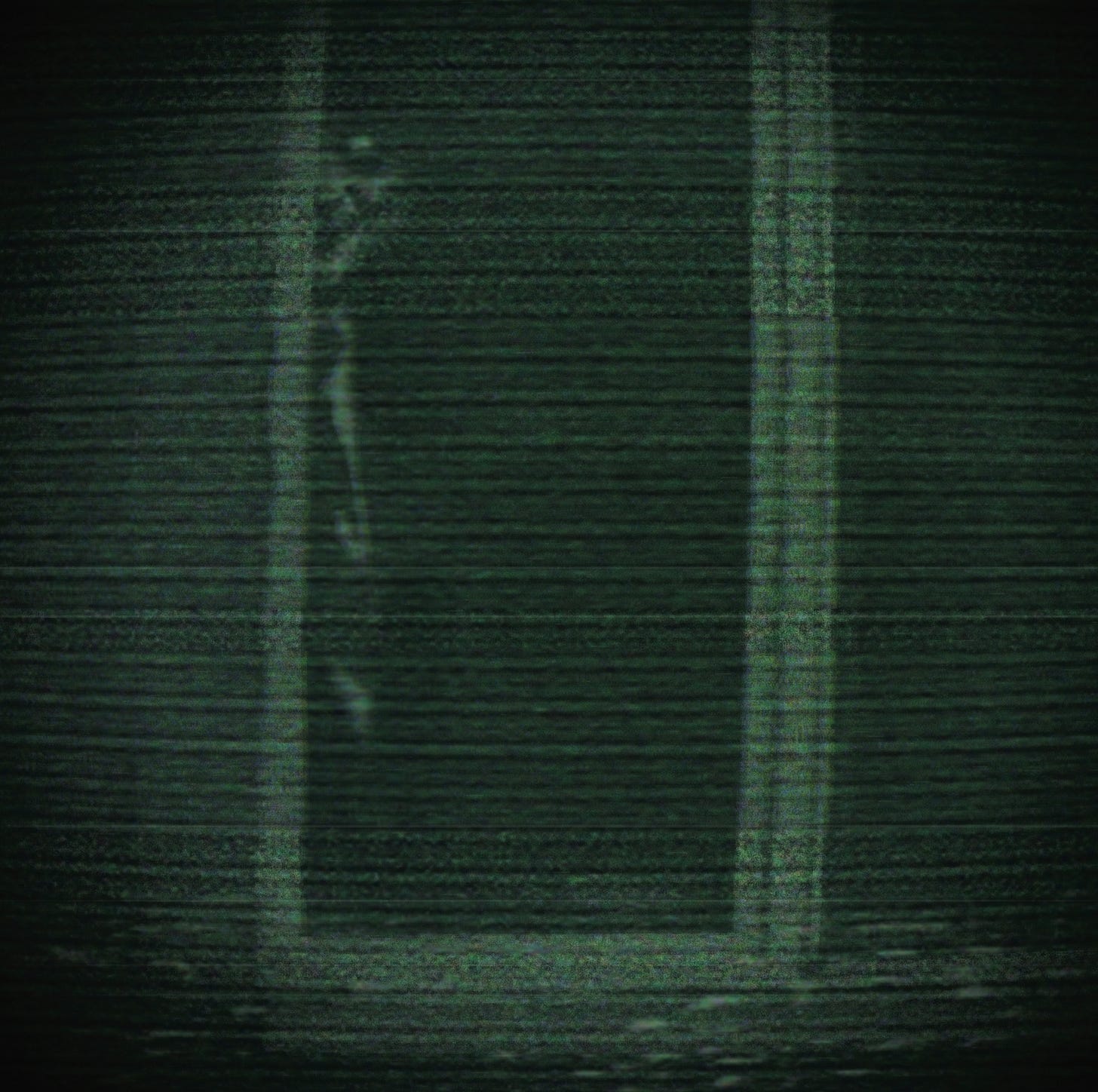
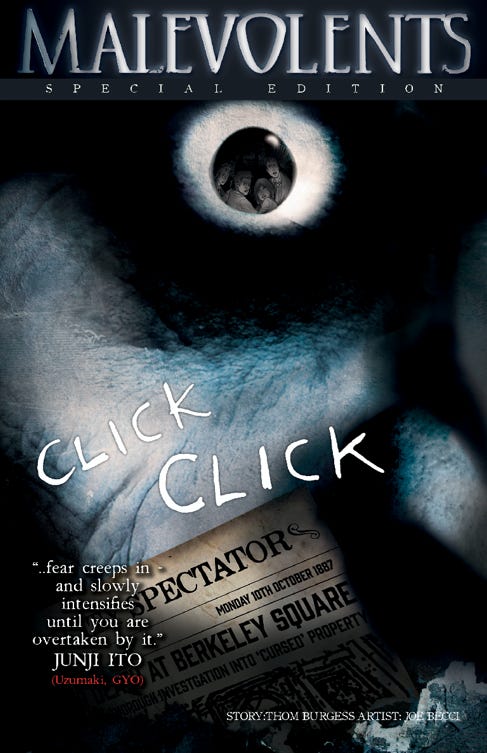
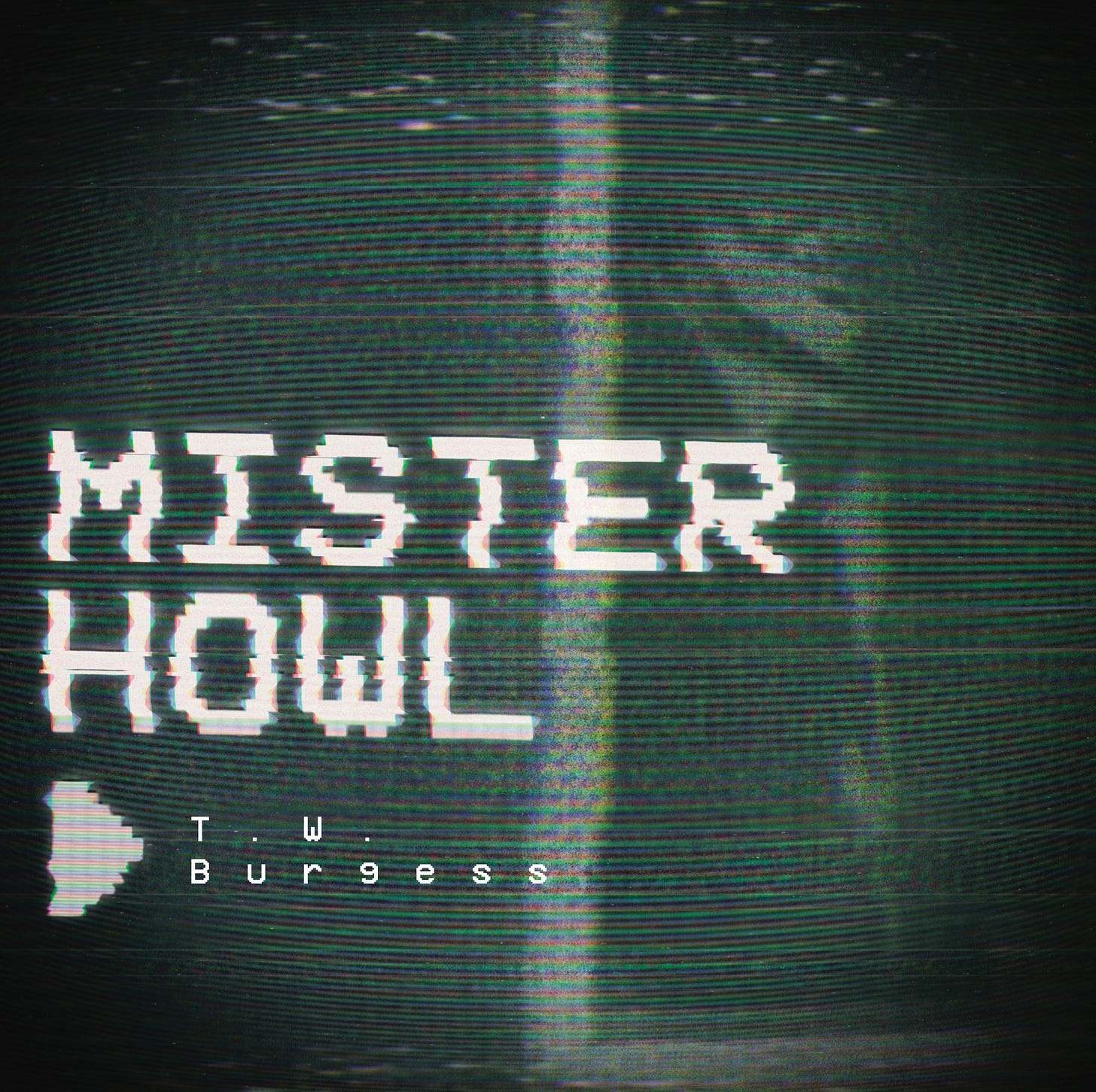
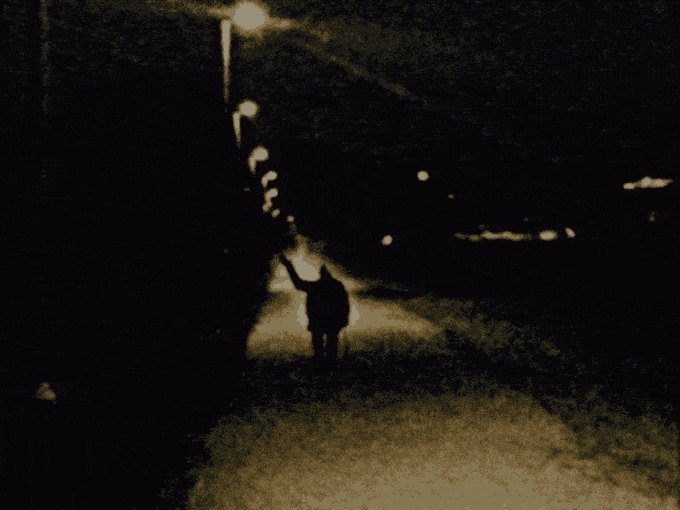
Really useful this, thanks Alec.
Thank you for introducing me to this! This is so in my wheelhouse I can't believe I've never heard of it. Junji Ito's praise alone makes it worth checking out.